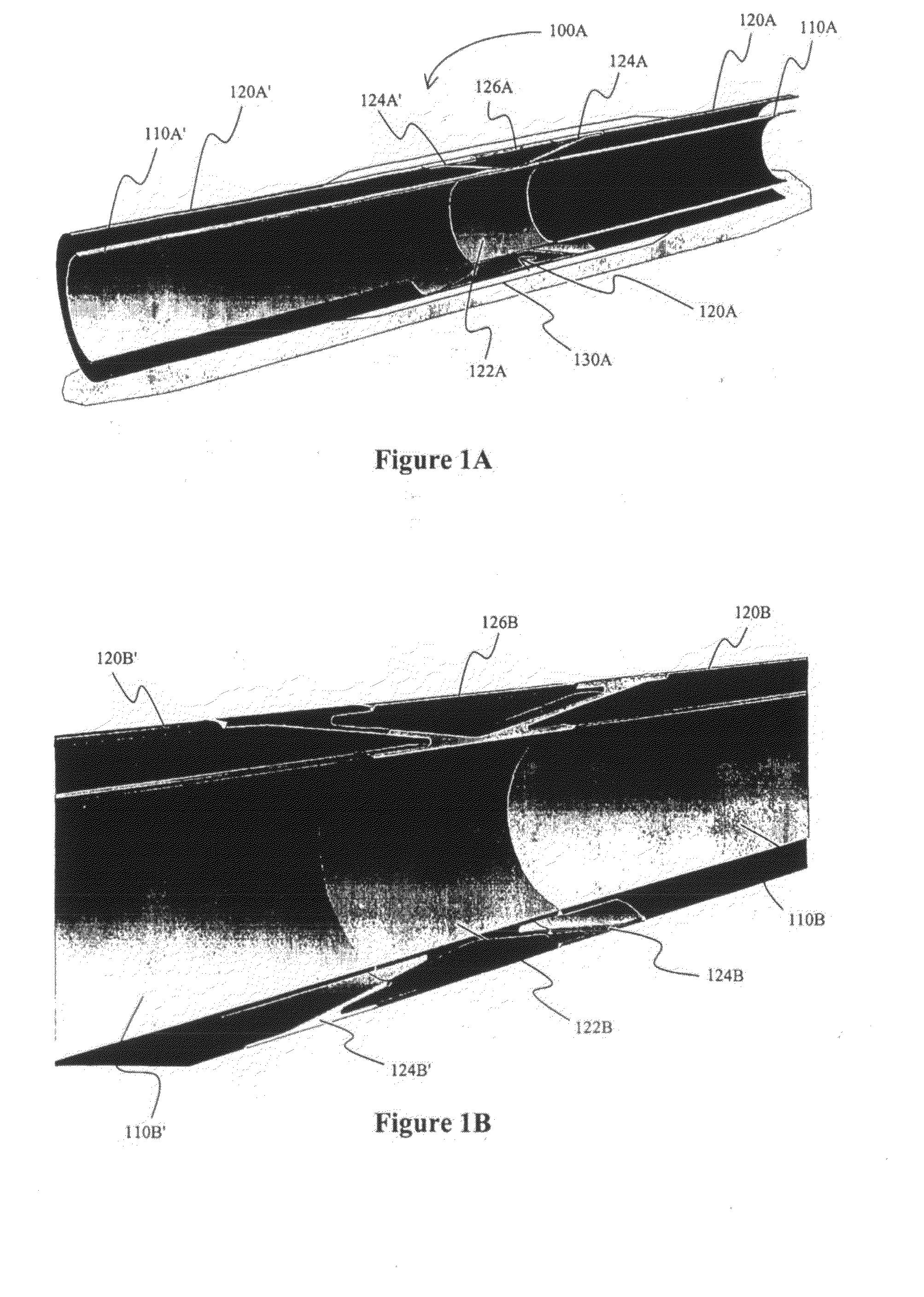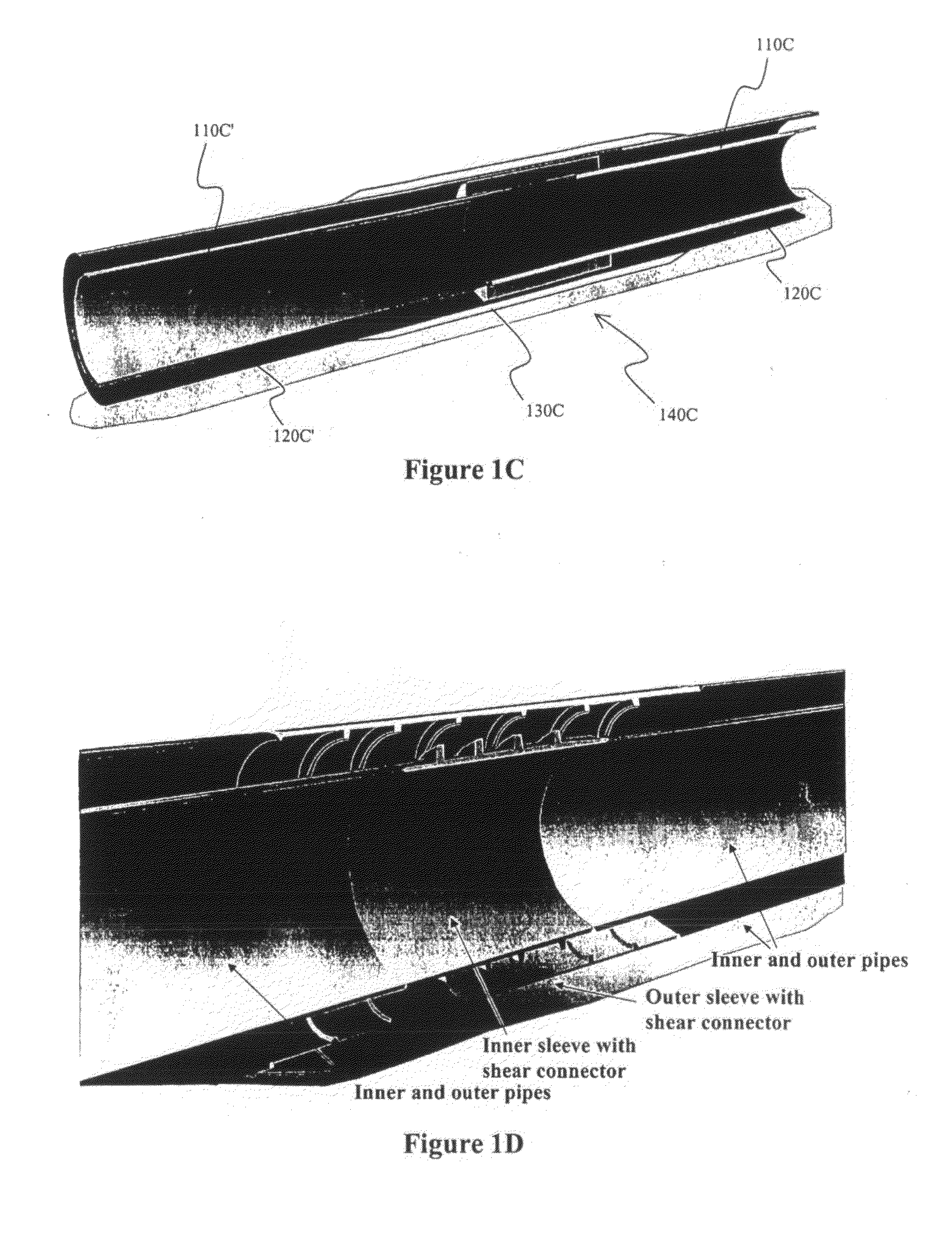Cryogenic Pipeline Configurations and Methods
a technology of cryogenic pipelines and configurations, applied in mechanical equipment, liquefaction, lighting and heating equipment, etc., can solve the problems of significant thermal stress, new difficulties arose with such solutions, and cryogenic transport of fluids and/or gases
- Summary
- Abstract
- Description
- Claims
- Application Information
AI Technical Summary
Problems solved by technology
Method used
Image
Examples
Embodiment Construction
[0022]The inventors discovered that pipelines, and especially those transporting material at sub-ambient temperature (e.g., cryogenic material) can be constructed in a manner such that the pipeline has both increased mechanical stability and desirable thermal insulation while maintaining a mechanically simple structure, which is relatively inexpensive to manufacture and install.
[0023]In particularly preferred aspects of the inventive subject matter, a cryogenic pipeline is manufactured from conventional materials. For example, the product pipe in a pipe-in-pipe pipeline can be manufactured from steel rated for cryogenic service (e.g., 9% Nickel steel), while the jacket pipe can be manufactured from carbon steel. Thermal insulation in such configurations is preferably a high performance nanoporous aerogel product, typically about 2 inches thick, in blanket form installed within the annular space at ambient pressure.
[0024]In one exemplary aspect of the inventive subject matter, a plur...
PUM
 Login to View More
Login to View More Abstract
Description
Claims
Application Information
 Login to View More
Login to View More - R&D
- Intellectual Property
- Life Sciences
- Materials
- Tech Scout
- Unparalleled Data Quality
- Higher Quality Content
- 60% Fewer Hallucinations
Browse by: Latest US Patents, China's latest patents, Technical Efficacy Thesaurus, Application Domain, Technology Topic, Popular Technical Reports.
© 2025 PatSnap. All rights reserved.Legal|Privacy policy|Modern Slavery Act Transparency Statement|Sitemap|About US| Contact US: help@patsnap.com



